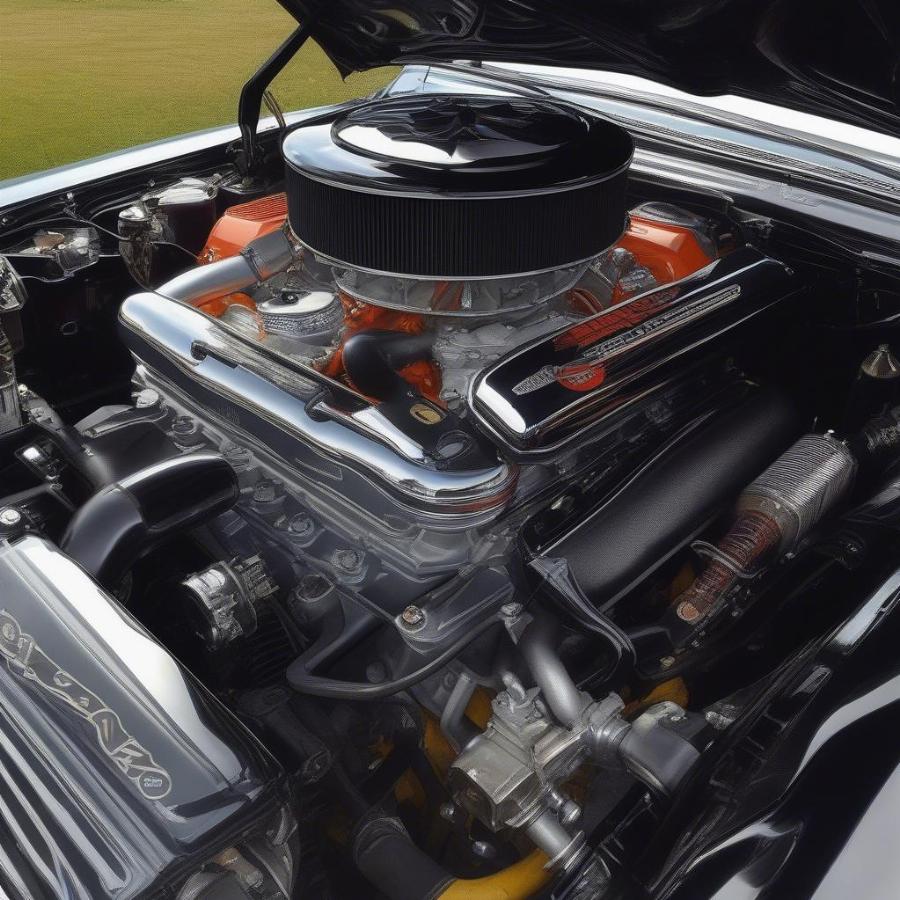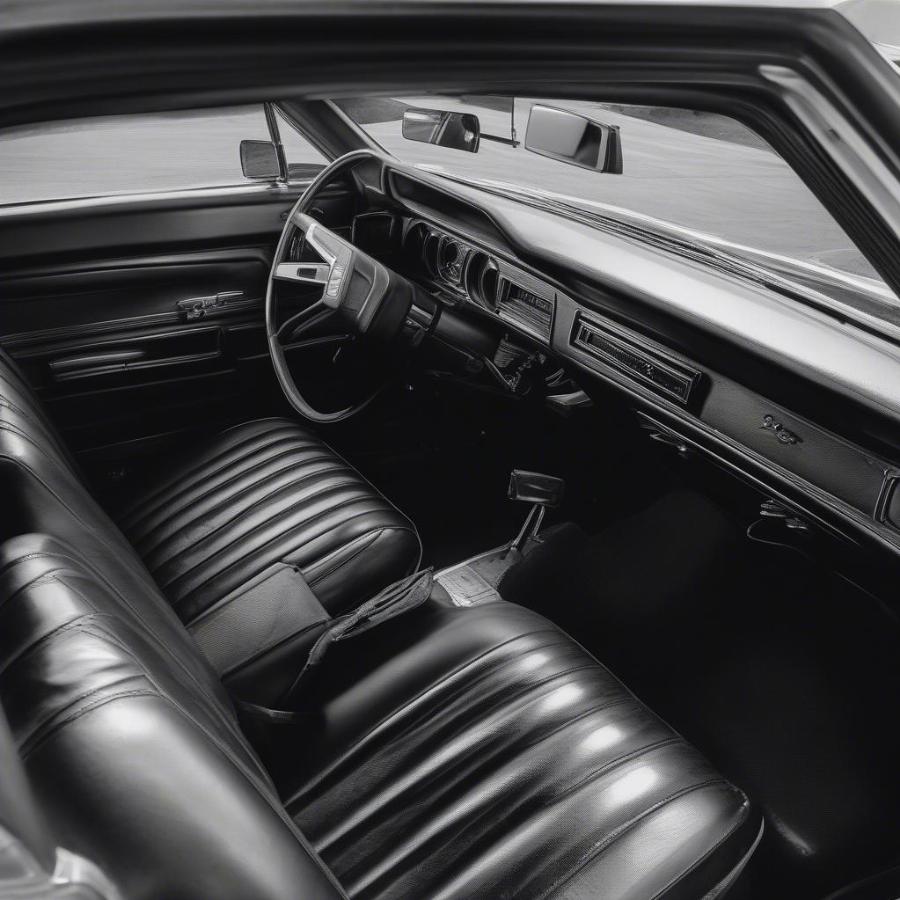Unleashing the Beast: A Deep Dive into the Super Bee 440

The Super Bee 440. Just the name conjures images of tire-shredding power and iconic muscle car styling. This legendary machine, born in the golden age of American muscle, remains a highly sought-after classic for enthusiasts and collectors alike. From its aggressive design to its roaring engine, the Super Bee 440 represents the raw, untamed spirit of the muscle car era. This article explores the history, performance, design, and cultural impact of this automotive icon.
The Birth of a Legend: Super Bee 440 Origins
The Super Bee 440 wasn’t just another muscle car; it was a response to a growing demand for affordable performance. Dodge, recognizing the need for a budget-friendly competitor to cars like the Plymouth Road Runner, introduced the Super Bee in 1968. Based on the Coronet platform, the Super Bee offered a stripped-down, no-frills approach to muscle, emphasizing power and performance over luxury. The 440 Magnum V8 engine, the heart of the Super Bee 440, churned out an impressive 375 horsepower, enough to propel this beast from 0 to 60 mph in under six seconds. This combination of affordability and performance quickly cemented the Super Bee 440’s place in the muscle car pantheon.
What made the Super Bee 440 special? It was a pure muscle car experience, distilled to its essence. No power windows, no fancy air conditioning, just raw, unadulterated horsepower.

The Heart of the Beast: Super Bee 440 Engine and Performance
The 440 Magnum V8 engine was the defining characteristic of the Super Bee 440. This robust engine, with its four-barrel carburetor and high-performance camshaft, delivered exhilarating acceleration and a soundtrack to match. While the standard 440 Magnum provided ample power, enthusiasts could opt for the Six Pack induction system, boosting horsepower even further and transforming the Super Bee 440 into a true street dominator. This legendary engine, combined with a heavy-duty suspension and upgraded brakes, made the Super Bee 440 a force to be reckoned with both on the street and the drag strip.
What was the top speed of a Super Bee 440? While official figures vary, these cars could comfortably reach speeds in excess of 120 mph.

Stripes, Spoilers, and Style: Super Bee 440 Design
The Super Bee 440 wasn’t just about brute force; it had style to match. Its aggressive stance, bold stripes, and the iconic Super Bee logo, often adorned on the rear quarter panels, gave it an unmistakable presence. The available “Ram Charger” hood scoop, functional and stylish, added to the car’s menacing aura. From its unique grille to its distinctive taillights, the Super Bee 440 exuded a sense of rebellious cool that resonated with a generation of car enthusiasts. The design language was a perfect reflection of the muscle car ethos – bold, brash, and unapologetically powerful.
Why was the Super Bee logo a bee? The name and logo were inspired by the “B-Body” platform the car was built on, and the bee represented its sting.

The Legacy of the Super Bee 440: A Cultural Icon
The Super Bee 440, like other muscle cars of its era, became more than just a car; it became a cultural symbol. It represented freedom, rebellion, and the pursuit of performance. Its image graced magazine covers, appeared in movies, and became ingrained in the American automotive landscape. Today, the Super Bee 440 continues to be celebrated by enthusiasts worldwide, its legacy secured as one of the most iconic muscle cars ever produced. The Super Bee 440 is a testament to a time when horsepower reigned supreme and style was defined by raw power.
“The Super Bee 440 wasn’t just a car, it was an experience. The rumble of that 440, the feel of the power pushing you back in your seat… it was pure adrenaline.” – Richard “Dick” Landy, renowned drag racer and engine builder.
Conclusion: The Enduring Appeal of the Super Bee 440
The Super Bee 440 remains a powerful symbol of the muscle car era. Its combination of affordability, performance, and striking design continues to captivate enthusiasts even today. From its roaring engine to its iconic stripes, the Super Bee 440 is a true automotive legend. Are you ready to experience the thrill of a Super Bee 440?
FAQ: Your Super Bee 440 Questions Answered
- What is the difference between a Super Bee and a Coronet Super Bee? The Super Bee was initially based on the Dodge Coronet platform, hence the name Coronet Super Bee for the first-generation models.
- How much horsepower did a Super Bee 440 have? The standard 440 Magnum engine produced 375 horsepower.
- What years was the Super Bee 440 produced? The Super Bee with the 440 engine was available from 1968 to 1970.
- What is the Six Pack induction system? The Six Pack was a triple two-barrel carburetor setup that significantly increased horsepower.
- Was the Super Bee 440 available with an automatic transmission? Yes, the Super Bee 440 could be ordered with either a manual or automatic transmission.
- What are some common Super Bee 440 colors? Popular colors included B5 Blue, R4 Bright Red, and FY1 Lemon Twist.
- What is the value of a Super Bee 440 today? The value varies depending on condition and rarity, but well-preserved examples can fetch substantial sums.
- Where can I find a Super Bee 440 for sale? Classic car websites, auctions, and specialized dealerships are good places to start.
- What are some common problems with Super Bee 440s? Like any classic car, rust can be an issue. Mechanical parts can also require attention due to age.




